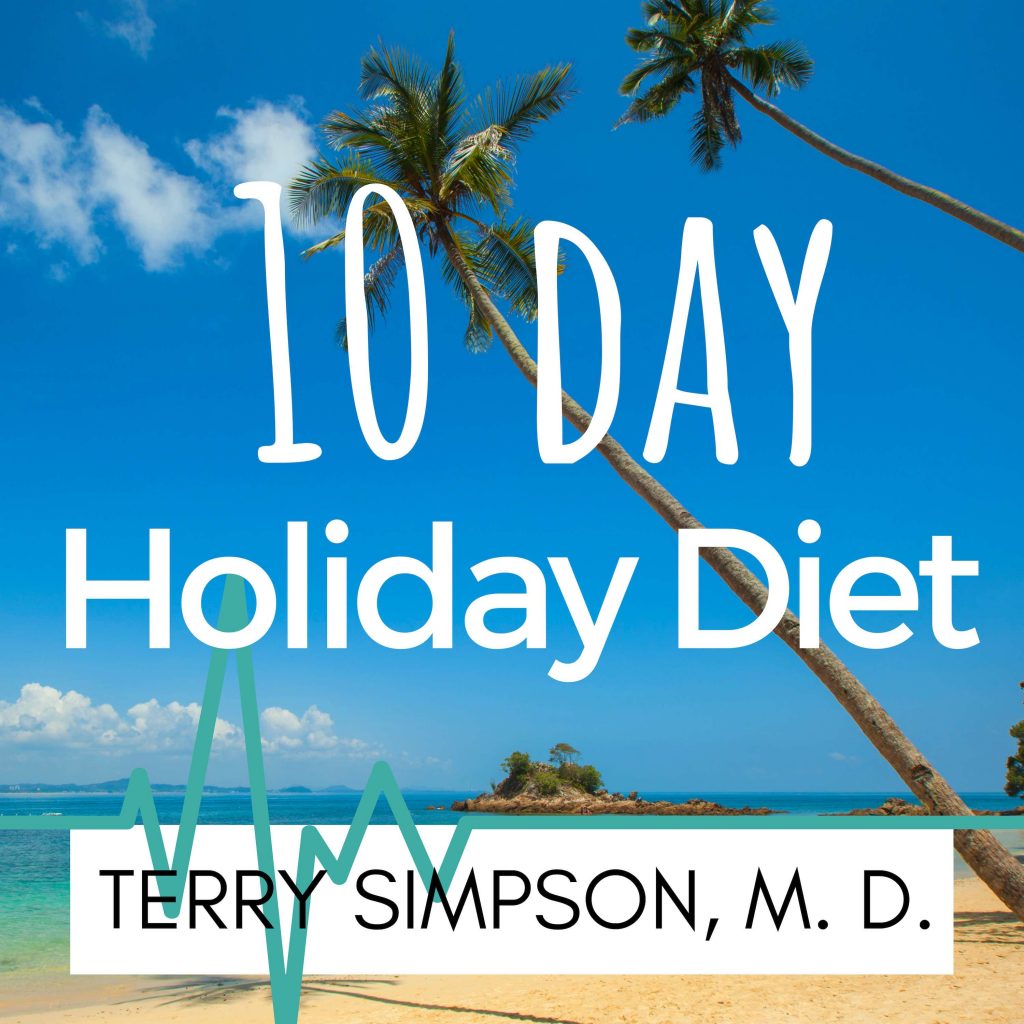 Holiday Diet
Holiday Diet
Hey, you food geniuses. Soon we’re going to start to record our diet episodes, where we scientifically evaluate the most common diets in America, and the myths surrounding those diets, because weight loss is the most common New Year’s Resolution.
But what if we could avoid weight gain? What if we had a short, intense program to avoid weight gain during those critical times when people gain weight?
It turns out that most … It turns out, most weight gain occurs during holidays, like Thanksgiving to Christmas, or vacation, like when you go home, and Mom cooks you your favorite foods, or when someone’s coming to visit, or when there’s a crisis in the family, and someone’s not well.
The average American gains about seven to 10 pounds during the holidays or a vacation. They only think they gained five pounds, so what about a short intervention to help us not gain weight during those times? It turns out, the Brits did this. They developed a system that worked. They developed a short intervention program, and today, we’re going to share that with you.
Here’s what you need for the intervention. A pocket notebook, a little bit of research, and a scale.
Start by writing down your favorite holiday foods, like the food Mom is likely to make when you go home, or the foods you’re most likely to eat on a cruise, and don’t forget the liquid calories, like the mai tai, margarita, or eggnog. Then calculate how much exercise it will take to burn those calories. For example, the average person burns about 100 calories by walking 20 minutes, or about 2,000 steps. Let me give you an example.
Take eggnog. If I drink one cup of eggnog, that’s about 225 calories. Burn that, I need to walk about two miles, or 4,000 steps, or 40 minutes at a brisk pace, but add a little bit of rum or whiskey to the eggnog, and now I have 335 calories to burn, so I have to add another mile and a quarter to the walk, or I have to walk about three and a third miles, 6,300 steps.
Going to drink another margarita at the pool? Plan on working out for 20 minutes in the gym. While that sugar cookie is only 112 calories, so that’s 20 minutes of brisk walking, it’s pretty easy to walk by the cookie jar and have six of them in a day without giving it a second thought. If you write it down, you give it a second thought. If you see how much exercise you have to walk for those six cookies, a two hour brisk walk, or 20,000 steps, you might grab the celery stick instead, so do that.
Write down all your favorite holiday food you’re going to encounter, how many calories to burn that food, like how many steps, or minutes to walk, but it doesn’t have to be walking. This last year I learned to scuba dive, and scuba diving uses a lot of calories, about 300 calories in 30 minutes, the same amount if you’re jogging. Want to take up yoga instead? They burn about the same amount as walking, so when you start to see food as calories burned, you tend to make different choices.
Consider mashed potatoes. If you like mashed potatoes made with whole milk, and who doesn’t, it’s 174 calories a cup. Two miles, 4,000 steps, but add some gravy, and you double that. Four miles, 8,000 steps. You might think twice about how many mashed potatoes you eat. Maybe half a cup instead of a full cup, or maybe less gravy. If you make the potatoes, maybe use 2% milk instead of whole milk.
You’re going to keep track of those things in your journal, your daily weight, the food you eat as you eat it. How many steps it takes, or whatever exercise you choose to do.
This works better than just getting a lecture about healthy lifestyle, and you’ve probably read five articles about how not to gain weight during the holidays. People who read those blog posts or magazine articles, they gain weight. According to this study in the British medical journal, those who did this short-term intervention, they lost weight.
The advantage of writing food down and weighing yourself, and monitoring your activity, you tend to take control. You make better judgment as to what the food is worth, and you tend to be more active.
Weight gain during a holiday season, or while on the trip, or during a stressful event, is not a desirable outcome, but by monitoring activity, weight, and calories with that short-term focus, you can keep from adding those pounds on. First, because when people write down their food and calories, they tend to make better choices, and second, they tend to think about food in terms of the work, but it doesn’t have to be work. It could be the increased activity while on vacation.
Maybe you take up a new sport, like yoga, or cycling, or scuba, which by the way, new sports tend to relieve stress even better than food. By being active and making better choices, you have less to lose later, and while nobody wants to think about weight loss during a holiday or a vacation, eventually you will think about it, and imagine if avoiding that one extra helping, or choosing not to have that second scoop of ice cream, leads to weight loss. Then when the new year comes, maybe you’re thinking about that last vacation, where you were active, lost some weight, and came back feeling better and healthier instead of bloated.
Wouldn’t you want your New Year’s Resolution to be taking more vacations, and not starting another diet to lose the weight you gained on vacation?
